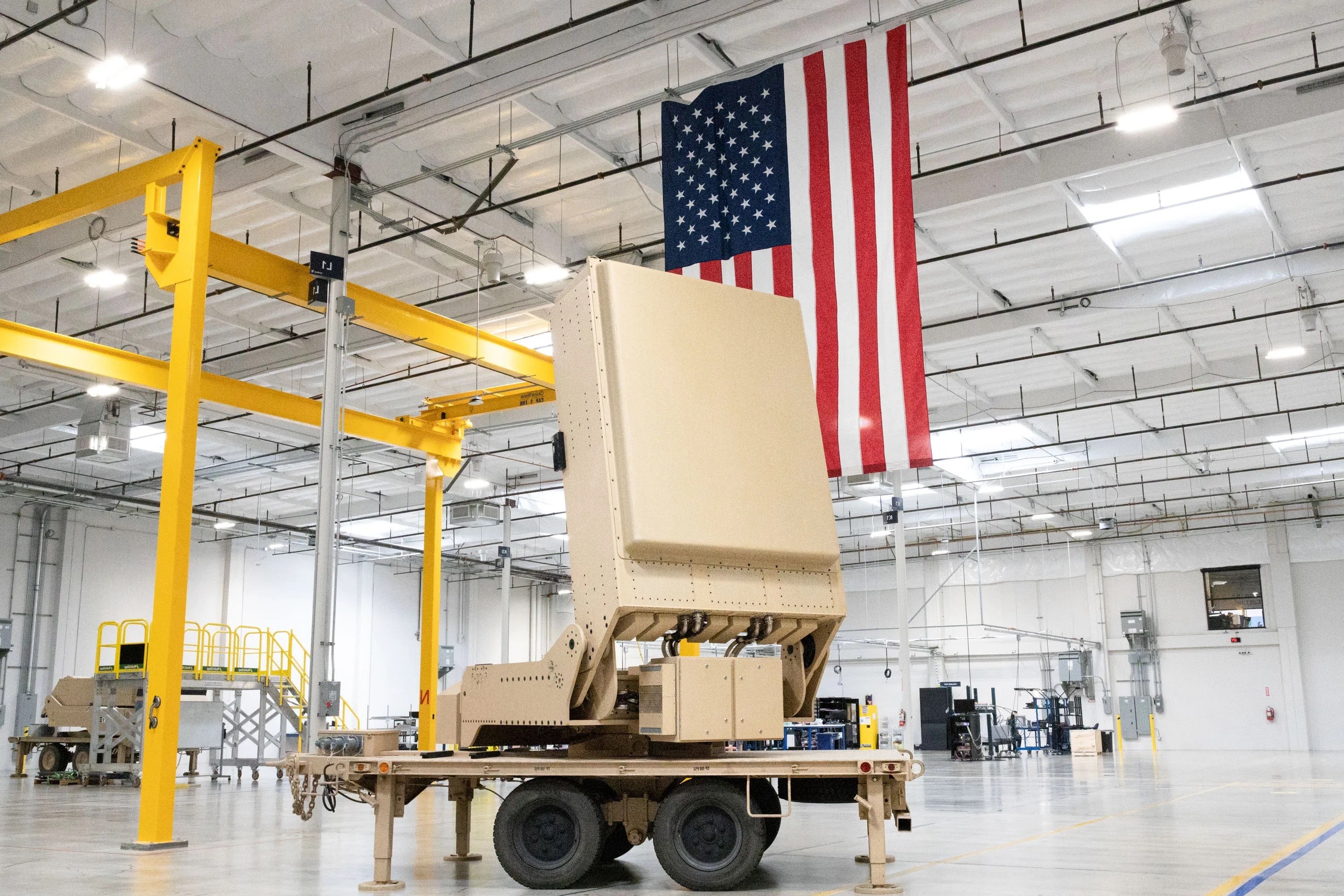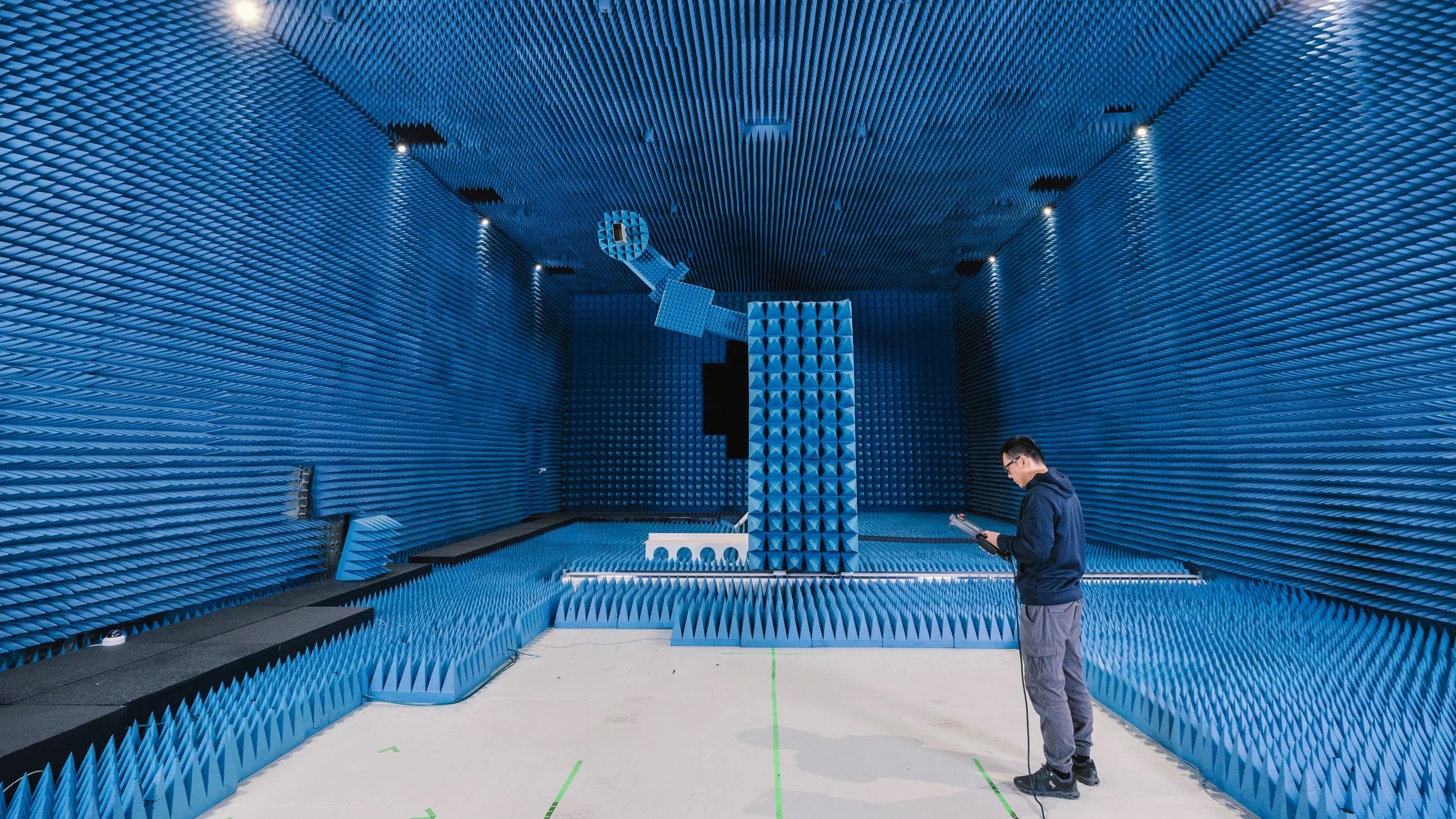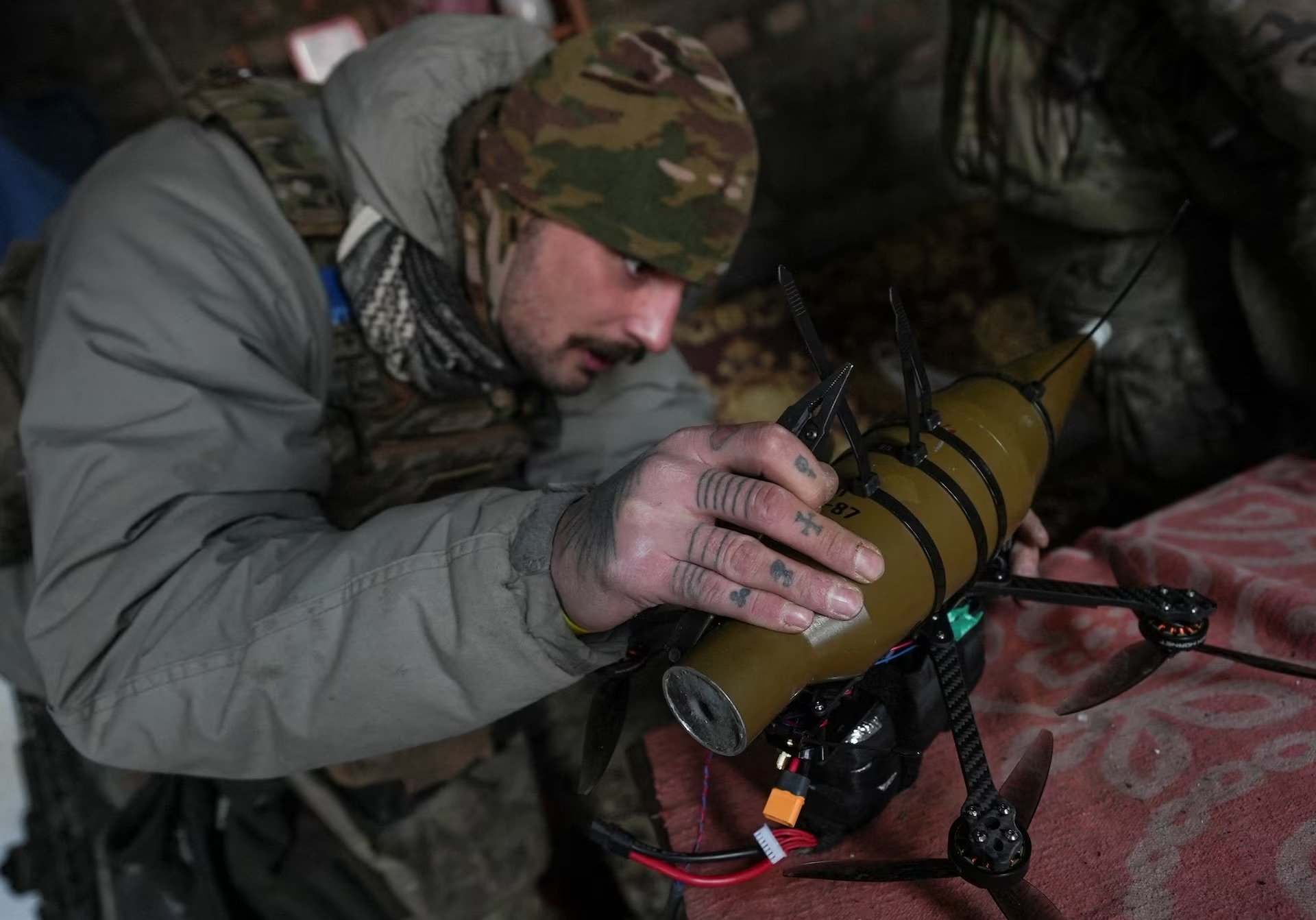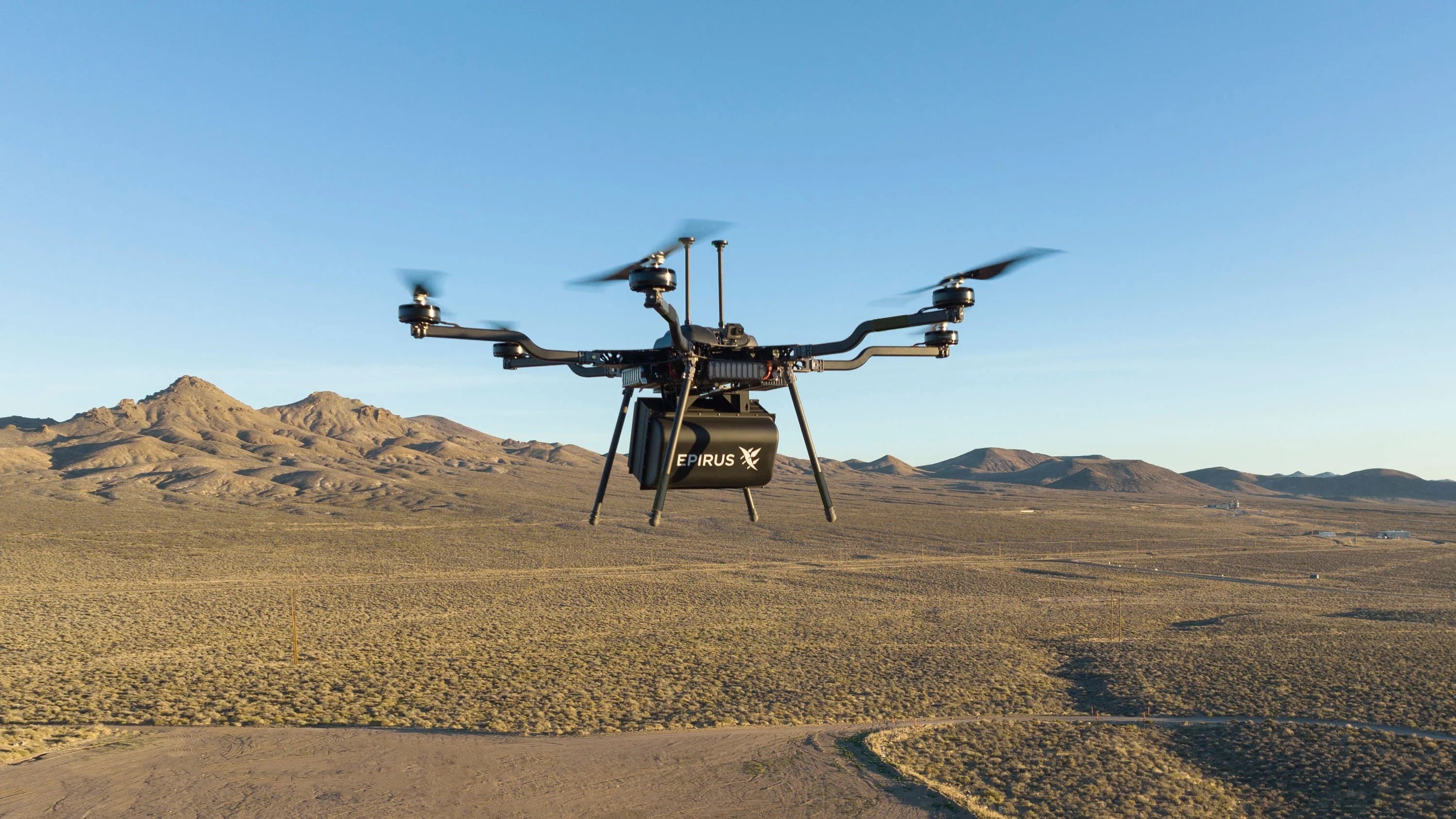Imagine a war where a nation deploys hundreds of thousands of autonomous drones, all armed with explosive warheads or small missiles. Within hours, a massive robot attack could overwhelm US forces in the Pacific before they could react.
“I was afraid to say it out loud, afraid of making it a reality,” Alex Miller, a veteran Army intelligence officer who will serve as technology adviser to the US Army Chief of Staff from 2023, told MIT Technology Review .
Every US military base around the world, as well as every other country, faces the same threat. The proliferation of cheap drones means that any group with relatively small resources can inflict damage without expensive jets or sophisticated missiles.
Anti-UAV equipment testing lab at an American tech startup. Photo: EPIRUS . |
The US has precision missiles to shoot down drones, but they are not always effective. A drone attack killed three US soldiers and wounded dozens at a base in the Jordanian desert last year. Moreover, each US missile costs many times more than the drone it is supposed to shoot down. Using missiles worth hundreds of thousands to millions of dollars to deal with drones worth only a few thousand dollars is an unsustainable solution, even with a US defense budget of nearly $1 trillion a year.
Microwave kills drones
All branches of the military and a host of defense startups are testing weapons that can disable drones en masse: suicide drones that crash like cars, drones that shoot nets, precision-guided machine guns, GPS jammers, cyberattack tools, lasers that burn, etc.
And then came the microwaves, high-powered electronics that pump out kilowatts of electricity to “fry” the drone’s circuitry, like accidentally putting aluminum foil in a microwave.
That’s what a tech startup called Epirus is doing. Based in Torrance, California, the company is developing a “giant microwave” called Leonidas, which the U.S. military is hoping will be a breakthrough anti-drone weapon. Epirus has received several military contracts and is testing the system in the Middle East and the Pacific . Details about the locations are not public, but it did test fire in the Philippines in May.
At close range, Leonidas looks like a metal plate about 60 centimeters thick, 3 meters wide and 6 meters high, mounted on a rotating stand. Inside are dozens of tiny microwave amplifiers, using chips made of gallium nitride, a material that can withstand higher temperatures and voltages than traditional silicon.
Leonidas is towed by a standard military vehicle. When launched, the control software coordinates the antennas and amplifiers to precisely beam microwaves in a phased array—combining multiple microwave signals into a focused beam. It can redirect the beam instantly using software, without having to physically rotate to aim each drone.
Leonidas can create an effect like an electromagnetic pulse (EMP) – an electronic “death ray”, or as a “shield” to protect the base from swarms of drones, like an invisible electric mosquito net.
At the factory, Epirus engineers are testing microwave units in specialized soundproof rooms, testing them on a variety of military and civilian drones with different waveforms and power levels to find the fastest way to disable the drone. In the test, when Leonidas was turned on and aimed, the drone did not explode but simply fell.
Drones are widely used devices and are changing modern warfare. Photo: Reuters . |
Leonidas could force opponents to spend more money to attack, taking away the drone's low-cost advantage.
Epirus CEO Andy Lowery describes Leonidas as a “defensive fighter” inspired by the Spartan warrior of the same name. He says the military wants the system as a last line of defense, destroying any drones that slip through the cracks. Epirus is ramping up production before the nightmare scenario of drone attacks becomes reality.
Optimal solution
Miller first became aware of the threat posed by armed drones in 2016, when ISIS militants strapped grenades to DJI Phantom drones during the battle for Mosul. Since then, he has witnessed the rapid development of computer vision, AI coordination, and suicide drone tactics. The war in Ukraine has further confirmed that cheap technology is completely changing the nature of war. Drones costing a few hundred dollars can attack tanks and trucks from a distance with great precision.
But current U.S. defenses are too expensive and insufficient to counter these threats. For example, in just 18 months, Yemen’s Houthis have used cheap drones and missiles to disrupt global shipping in the Red Sea with a small, understaffed force.
Among the companies selling anti-drone weapons to the US, the most prominent is Anduril, founded by Palmer Luckey, the father of Oculus. Anduril's weapons include jammers and suicide drones.
A smaller version of Leonidas, which can be carried on a drone, is also being tested. Photo: EPIRUS . |
The cheapest solution is still electronic warfare, jamming GPS or control signals. But in Ukraine, a new generation of drones has appeared that cannot be jammed. They operate fully autonomously via internal maps or connected by dozens of kilometers of fiber optic cables.
But drones that can’t jam are still vulnerable to the “microwave.” Leonidas’s microwave beam hits the drone itself, shorting out the internal circuitry of the controller and small wires. Even if the drone is copper-shielded, the beam can still get through exposed spindles or antennas.
Leonidas has the advantage of destroying multiple drones at once. Lasers and interceptors are effective, but only one target at a time. Leonidas can continuously “catch” everything in a 60-degree beam because such directed energy weapons never run out of ammunition.
Each Leonidas unit currently costs about $16.5 million. Compared to interceptor missiles that cost hundreds of thousands of dollars per shot, Leonidas could be cheaper after just one wave of attacks.
In the future, Leonidas could be deployed along the US-Mexico border. And the bigger idea is to deploy Leonidas at a city scale, like the 100-foot-tall PAVE PAWS radar used to detect nuclear missiles. This system could protect an entire large area from drones.
Source: https://znews.vn/lo-vi-song-khong-lo-huy-diet-uav-post1566174.html
























































![[Maritime News] More than 80% of global container shipping capacity is in the hands of MSC and major shipping alliances](https://vphoto.vietnam.vn/thumb/402x226/vietnam/resource/IMAGE/2025/7/16/6b4d586c984b4cbf8c5680352b9eaeb0)













































Comment (0)